TWH – Today in the northern hemisphere we honor the abundant light and in the southern hemisphere the returning light. This year the solstice arrives at The Wild Hunt headquarters in Miami, Florida in the Northern Hemisphere, just about 2 degrees latitude north of the Tropic of Cancer that makes the northernmost position of the sun on Earth, on June 21, 2023, at 10:57 a.m. EDT, 0r 016:57 UTC.
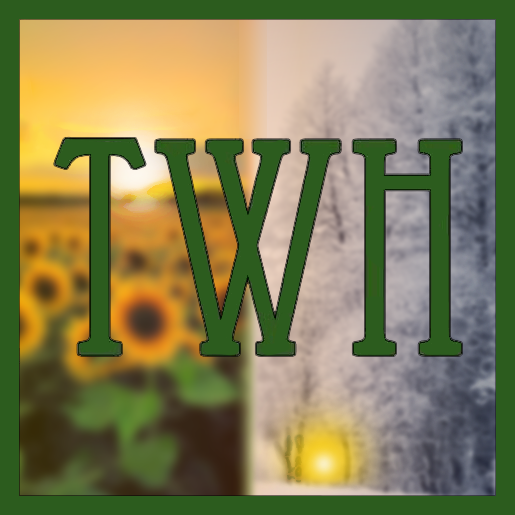
The solstice is a consequence of the Earth’s tilted axis of 23.5 degrees which was likely caused by a massive object striking our planet billions of years ago. The tilt has brought us the seasons. Because of the impact and the tilt, we continue to experience solstices and equinoxes.
The summer solstice is marked by a variety of Pagan traditions, and the TWH team is celebrating with our community. In the northern hemisphere, the Earth’s tilt faces the sun, while the far south is covered in darkness, and both are moments that are meaningful in science and spirit.
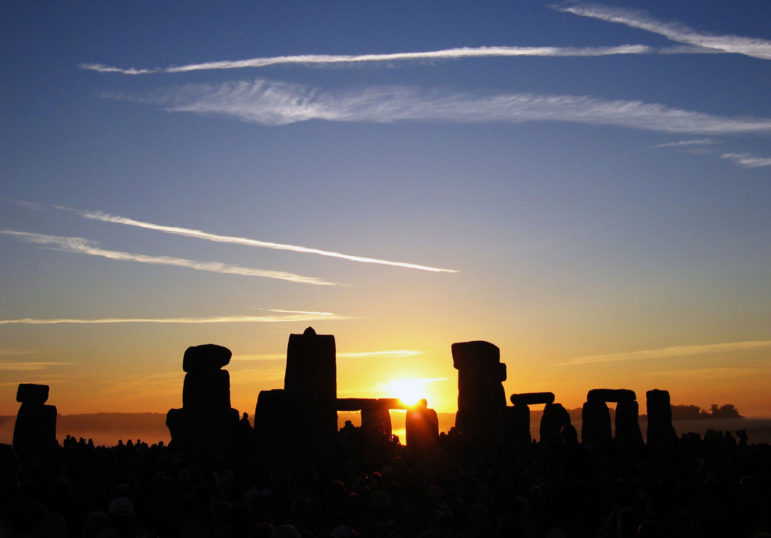
Solstice at Stonehenge [Wikimedia Commons, CC BY-SA 2.0]
In the farthest northern reaches, the daylight length has been over 24 hours since mid-May. Today, Prudhoe Bay, Alaska at 70 degrees North latitude and on the shores of the Arctic Ocean will see continuous daylight. Their next sunset followed by 30 minutes of night, will be on September 19, 2023.
Reykjavik, Iceland, the world’s northernmost capital of a sovereign state, is at 64°08′ North latitude and will see twilight but no night until September 3, 2023.
The south pole has seen no daylight since May 11 and will see not see twilight again until August 1st. At one of the closest southern points, in Ushuaia, Tierra del Fuego, Argentina will see only seven hours and 12 minutes of daylight.
Wellington, New Zealand is the world’s southernmost capital city at 41°17′ South latitude. It will see 9 hours and 11 minutes of daylight.
English Heritage tweeted earlier today “Please note: there is very heavy traffic in the area and we would advise people travelling to Stonehenge for Summer Solstice to expect long delays.” The organization announced that it will be streaming the solstice arrival at the ancient site.
One of the earliest references to the solstice in US newspapers occurs in the Daily National Intelligencer from Washington, DC, on Wednesday, June 20, 1821,
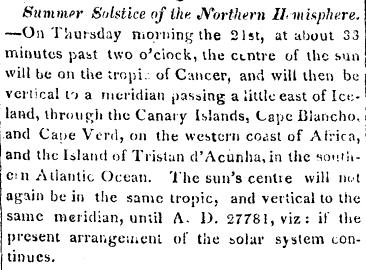
The solstices had been referenced four years earlier in a rather cryptic article about comets in the sample publication on August 28, 1817. In that article, we are informed that “the heat of boiling water is three times greater than dry earth at the summer solstice.”
National Geographic reminds us that the solstice is also deeply rooted in human culture.
The summer solstice—also called midsummer—has long been recognized and often celebrated by many cultures around the world. The ancient Egyptians, for example, built the Great Pyramids so that the sun, when viewed from the Sphinx, sets precisely between two of the pyramids on the summer solstice.
The roots of all these such celebrations were naturally pre-Christian. The early Christian church co-opted the holidays as part of liturgical festivals. Deutsche Welle wrote that “Midsummer day eventually became a holiday in the religions of the Germanic, Scandinavian, Baltic, Slav and Celtic peoples” and noted that “During the Christianization of Europe, a Christian interpretation was implanted into formerly pagan holidays and their rites and customs. This also holds true for the winter and summer solstices. During the first centuries after Christ, they were celebrated on Christ’s birthday on December 24/25, as well as on June 24/25.”
Indeed, in honor of the wealth of sunshine, many cultures have celebrated with outdoor festivals well into the “night” and building bonfires along with dancing and music as part of both traditional religious rituals and secular celebrations.
In some modern Pagan practices, it is believed that this holiday represents the highest ascendancy of masculine divinity.
Some Pagans, especially those celebrating in Celtic traditions, see the solstices as the biannual battle between the Oak King and the Holly King. The Oak King is at his zenith of power in the north while the Holly King is at his peak in the south.
Other traditions see the solstice as a turn. In the north, the power of the plentiful light is a reminder to enjoy the moment, for the light begins to wane as we turn to the dark. Similarly, for the Southern Hemisphere, the solstice is a reminder that despite the darkest night, the light remains unconquered.
The summer solstice is also known as Midsummer in some traditions and Litha in others.
In Sweden, Midsommar is an official holiday celebrated with co-occurring Feast of St. John in the Christian church. While previously set as June 24, the Swedish Parliament declared in 1952 that the holiday should be celebrated on the weekend. So now it occurs on the Saturday between June 20 and June 26, with celebrations beginning on Midsummer’s Eve. This year, Midsommar is Saturday, June 24.
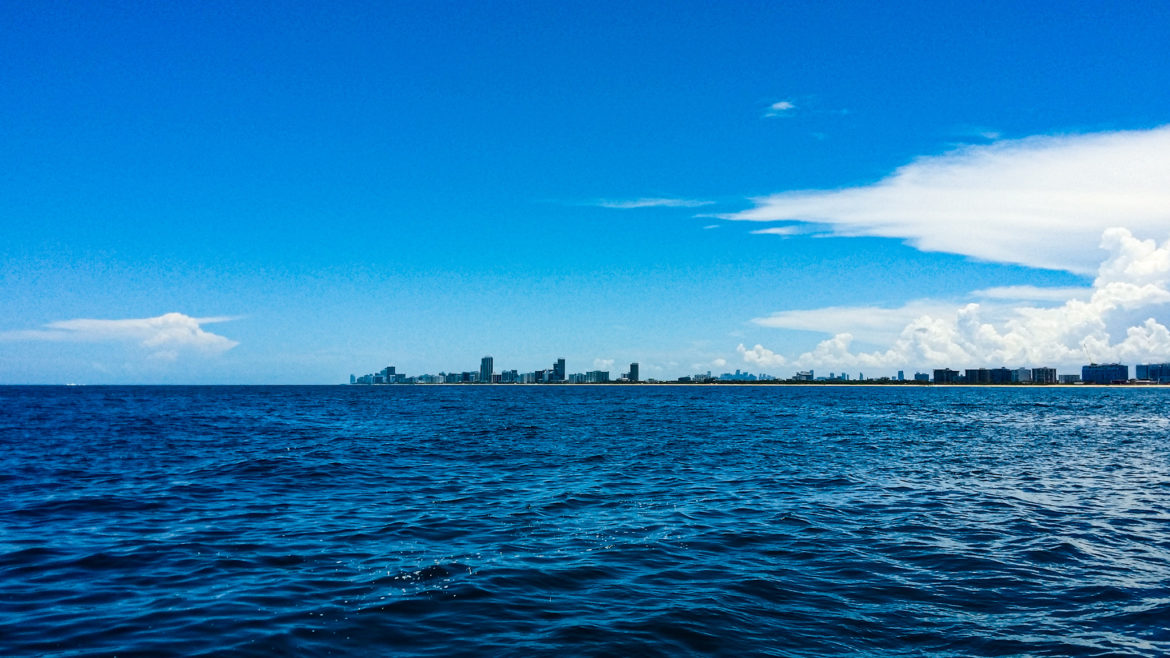
Offshore [Photo Credit: MJTM]
In Spain, especially in the Celt-Iberian regions, Midsummer is a time to harvest herbs and dip in the ocean for fertility.
Manny Moreno wrote about some personal summer solstice traditions in Salt, Tears or the Sea, that he experienced being in Florida and of both African and Celtic descent:
For us in Florida, though, when celebrating midsummer, there were three things you were supposed to do over the course of the day and into the night besides eat the ajiaco. The first of these was to jump over a small fire at least once. A small burning log was separated from the fires for us to jump over for the kids. The second thing was to bring herbs like basil, rosemary and oregano to wash in the surf. They were then bundled together and hung to dry at home, forming little salt crystals all over them. They were to be used during the next few days for both culinary and spiritual purposes. The third thing we were supposed to do is to stand with your back to the ocean and fall backwards into it seven times.
Our weekend editor, Eric O. Scott, shared a story about his visit to Iceland that echoes both solstices in his essay The Candle:
MIDSUMMER, I carve into the wax. If I were more clever, I would have thought to look up phrases in Icelandic for this purpose before I left for Tjörnin, but it was too late for that now. I had to settle for English words, in letters that predated either of the languages that currently make up my world, the language of my birth (the language of power, comfort, ignorance, colonialism) and the language of this land (the language of frustration, error, isolation, faith.) ICELAND, MIDSUMMER 2014 I carve, along with three other words, and I set the candle to burning, to release my spell into the night.
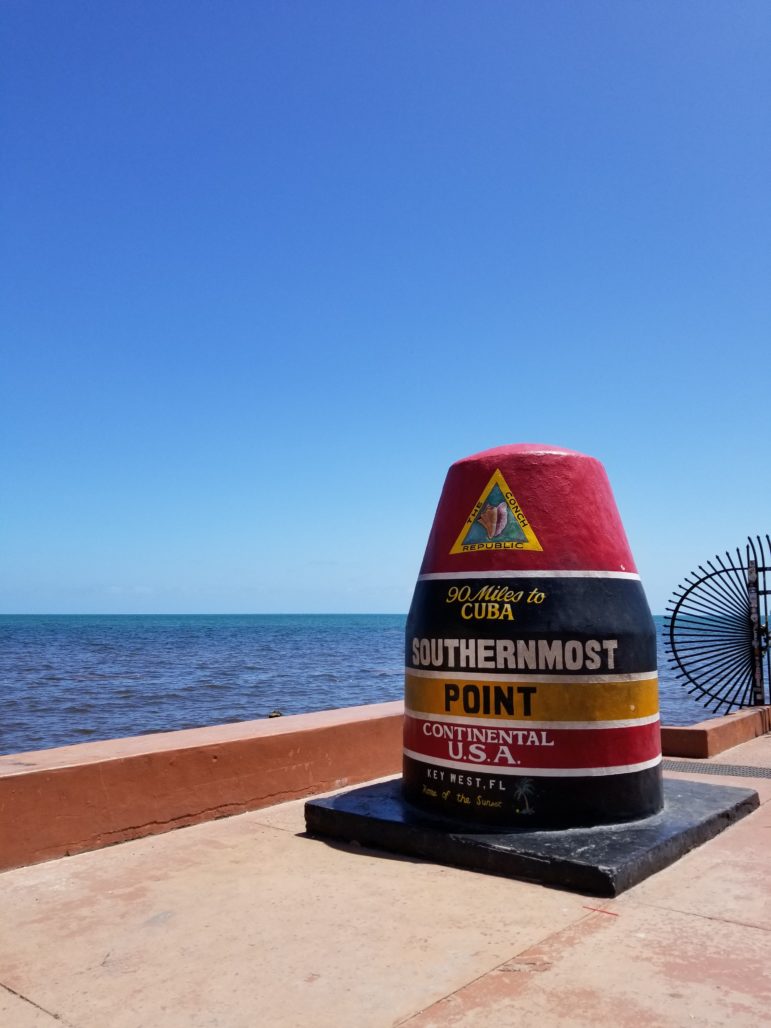
The Tropic of Cancer 😉 (as seen from Key West, FL) [Photo Credit: Stefano Ciotti]
From all of us at The Wild Hunt, thank you again for your time reading, your encouragement, and whatever support you are able to offer: social, financial, magickal, and spiritual.
Solstice blessings, be it Midsummer or Yule or simply honoring the science of around the Earth’s tilt – may our guides offer their counsel and there be much joy ahead!
The Wild Hunt is not responsible for links to external content.
To join a conversation on this post:
Visit our The Wild Hunt subreddit! Point your favorite browser to https://www.reddit.com/r/The_Wild_Hunt_News/, then click “JOIN”. Make sure to click the bell, too, to be notified of new articles posted to our subreddit.